











































MIDWEEK UPDATE 12 AUGUST 2020



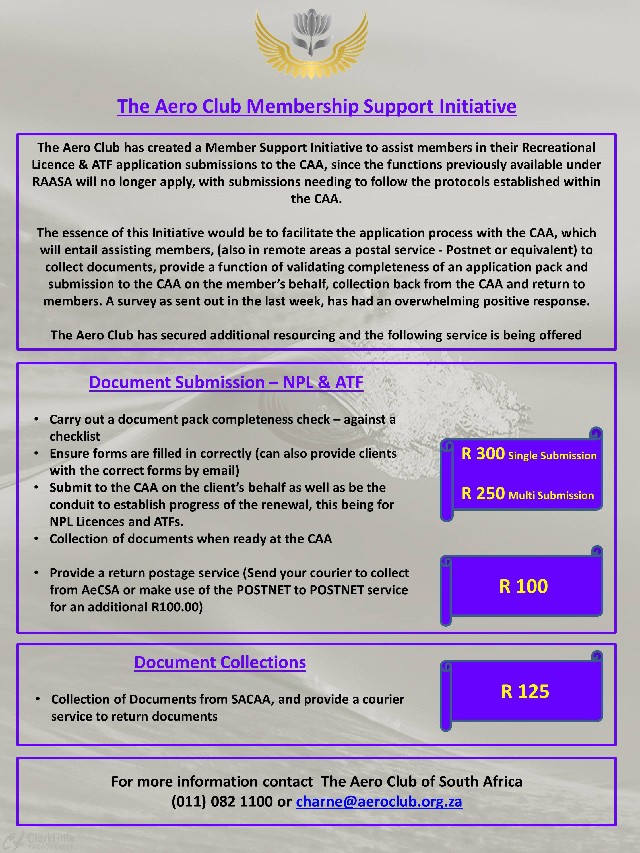

COVID 19 REGULATIONS, INITIATIVES AND AEROCLUB NEWS
SACAA CLIENT SERVICES WALK IN COLLECTIONS BOOKING TOOL ANNOUNCED
The collections will be managed as follows:
License collection (Midrand)
- Walk-in collections will be permitted on Monday, Wednesday and Friday. All walk-in clients must have a confirmed booking and must produce the attached confirmation
- Time slots will be between 10h00 and 15h00
- 5 walk-in clients will be scheduled every 30 minutes to minimise the number of walk-in clients
- Courier companies will not be required to make bookings for collection
- Bulk-clients and operators may collect on Tuesday and Thursday. No bookings will be required for these clients as we will be able to manage the numbers.
Certificate Collection (Midrand)
- Walk-in collection will be permitted on Wednesdays. All walk-in clients must have a confirmed booking and must produce the attached confirmation
- Time slots will be between 10h00 and 15h00
- 5 walk-in clients will be scheduled every 30 minutes to minimise the number of walk-in clients
- Courier companies will not be required to make bookings for collection
- Bulk-clients and operators may collect on Tuesday and Thursday. No bookings will be required for these clients as we will be able to manage the numbers.
Certificate and License (Rand Office)
- Walk-in collection will be permitted on Monday, Wednesday and Friday. All walk-in clients must have a confirmed booking and must produce the attached confirmation
- Time slots will be between 10h00 and 15h00
- 3 walk-in clients will be scheduled every 30 minutes to minimise the number of walk-in clients
- Courier companies will not be required to make bookings for collection
- Bulk-clients and operators may collect on Tuesday and Thursday. No bookings will be required for these clients as we will be able to manage the numbers.
The above measures will be adjusted as when there are required changes. Colleagues, I look forward to your feedback and further input on the process.
Regards
Ayanda Manunga

SOUTH AFRICAN POWER FLYING ASSOCIATION
COVID-19 Standard Operating Procedure for Events
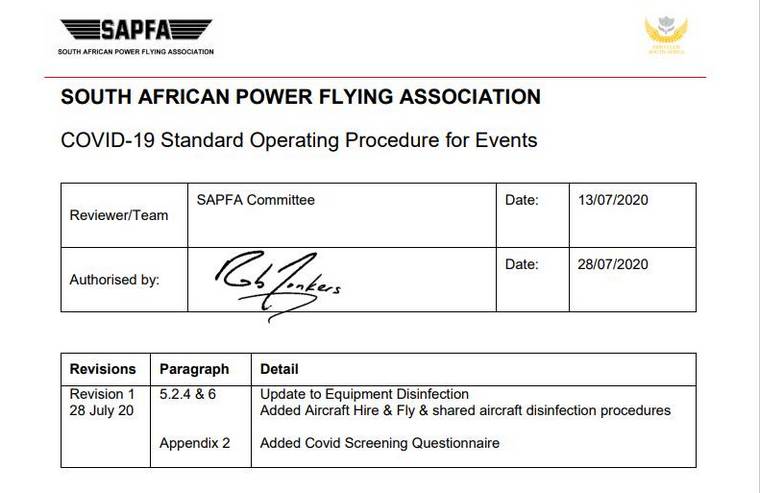
1.0 Purpose...................................................................................................... 2
2.0 Scope ......................................................................................................... 2
3.0 Definitions and Abbreviations .................................................................. 2
4.0 Resources / Responsibilities.................................................................... 2
5.0 Methodology / Procedure.......................................................................... 3
5.1 Registration ................................................................................................. 3
5.2 Procedures to follow at the Airfield / Event................................................... 3
6.0 Distribution List......................................................................................... 3
Appendix 1: ........................................................................................................... 4
Appendix 2: ........................................................................................................... 5
1.0 PURPOSE
The purpose of this document is to provide a structured and scientific approach to the containment of the Coronavirus which developed into a worldwide pandemic after the first outbreak was noted from China in December 2019.
Therefore, as part of a continued effort to provide healthy and safe practise of aviation sporting events, SAPFA will implement, reasonable practicable measures to reduce the risk of the highly contagious virus.
This document will further highlight ways to manage conditions and thereby assisting to curb the transfer of the virus to healthy and uninfected persons and persons with known or disclosed health issues or comorbidities.
2.0 SCOPE
The procedure applies to all SAPFA members, participants, visitors and spectators at any of the SAPFA events.
3.0 DEFINITIONS AND ABBREVIATIONS
The abbreviations applicable to this document are listed below:
Common Contact Area: Area that are commonly touched by more than one person such as door handles/knobs, kettles, fridge handles, telephone, kitchen appliances, computers, etc.
PPE: Personal Protective Equipment.
SOP: Standard Operating Procedure.
4.0 RESOURCES / RESPONSIBILITIES
SAPFA Committee Members will be responsible for the overall management of the COVID19 readiness in terms of this procedure. Committee members or competent designated persons will be responsible for the implementation of the procedure at any of the SAPFA events/meetings. This Designated Person / Compliance Officer would in general also be the Safety Officer for the event.
No more than 50 persons will be allowed to attend the event.
5.0 METHODOLOGY / PROCEDURE
5.1 Registration
5.1.1 Online registration. Participants would register online on the SAPFA website portal for their flight. This will ensure records of activity on the particular event day. Only after registration would they be granted access to their stated airfield where the event is to take place.
5.1.2 C-19 Compliance Officer. Each event will have an appointed compliance / safety officer ensuring additional adherence to operating procedures. The Compliance / Safety Officer shall set up a cleaning station (if applicable), if it is decided that the event shall have a hygiene station, comprising a small table and with either a spray or washable disinfectant, which is compliant with Government protocols.
5.1.3 Arrival at site Report to compliance /safety officer and complete register/ record temperature and complete screening protocol. Any person exhibiting inflated temperatures (above 37.5 Deg C) or exhibits flu like symptoms to be denied access to the Airfield / Event.
5.1.4 Declaration: Each person associated with the event must sign a declaration stating that he/she has no fever or symptoms that could be possible Covid-19 infection.
5.2 Procedures to follow at the Airfield / Event
5.2.1 Sanitation. Pilots / Crew / Organisers / Members shall provide their own sanitiser either a spray or washable disinfectant, which is compliant with Government protocols. Hand hygiene to be conducted before and after every flight.
5.2.2 Social Distancing guidelines will be adhered shall be maintained during operations 5.2.3 PPE - Pilots / Crew / Organisers / Members shall make use of masks/face buffs without exception. No person will be permitted to enter the clubhouse/offices or designated event areas if their mouth and nose are not covered by a mask.
5.2.4 Equipment: Pilots / Crew / Organisers are to bring their own respective equipment for use for the event, no equipment sharing allowed. All equipment shall be disinfected prior to being used for the event 5.2.5 Event Preparation: The compliance / Safety Officer to assess the event venue and carry out disinfectant procedures for any common contact areas.
5.2.6 Flying Operations: Each crew member shall have a hand sterilizer on board the aircraft. Each crew member to wear a face shield if more than one person on board. All persons on board shall have gloves to avoid and reduce any potential contamination. All work surfaces, tools, baggage, aircraft interior and controls shall be disinfected prior to and after each flight, this will be applicable if aircraft are obtained as hire & fly or if aircraft are shared in events. Crew(s) will use an intercom system to communicate when flying.
6.0 DISTRIBUTION LIST
This document will be distributed to all committee members and designated persons responsible for all events, meetings, and assemblies.
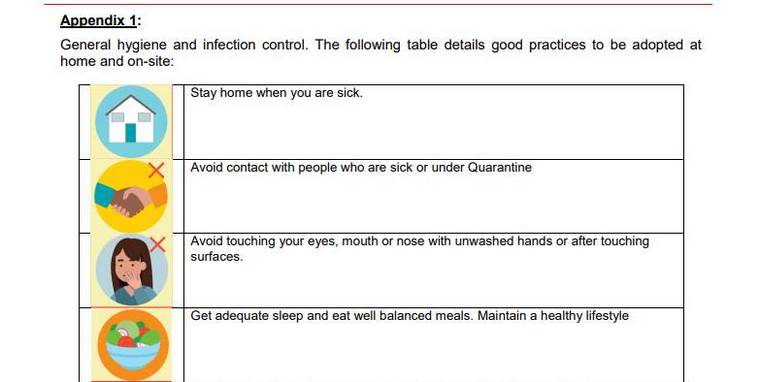
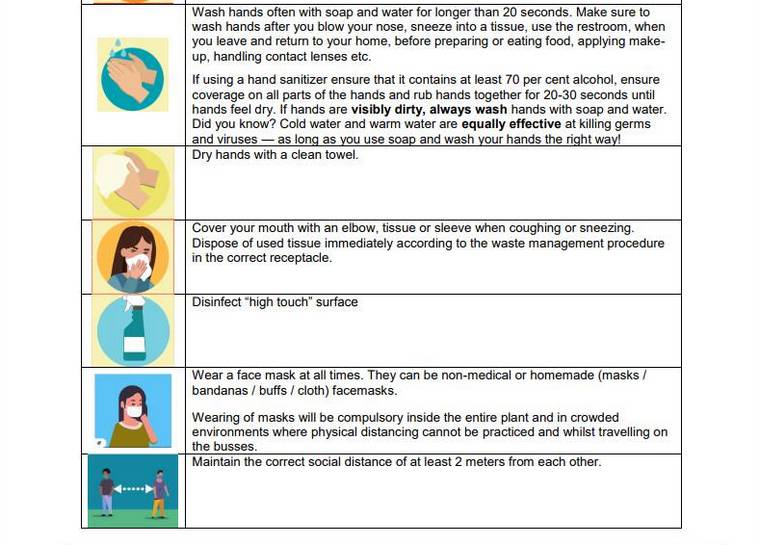
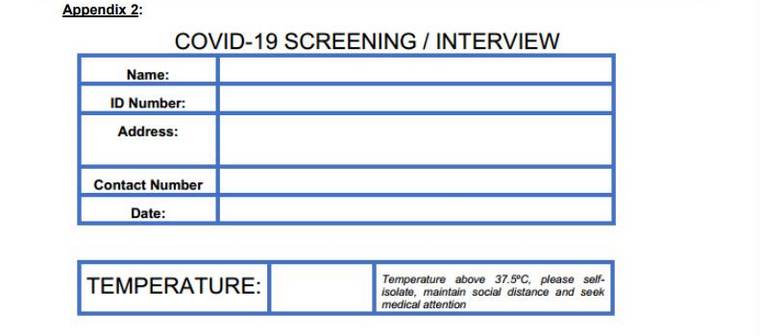
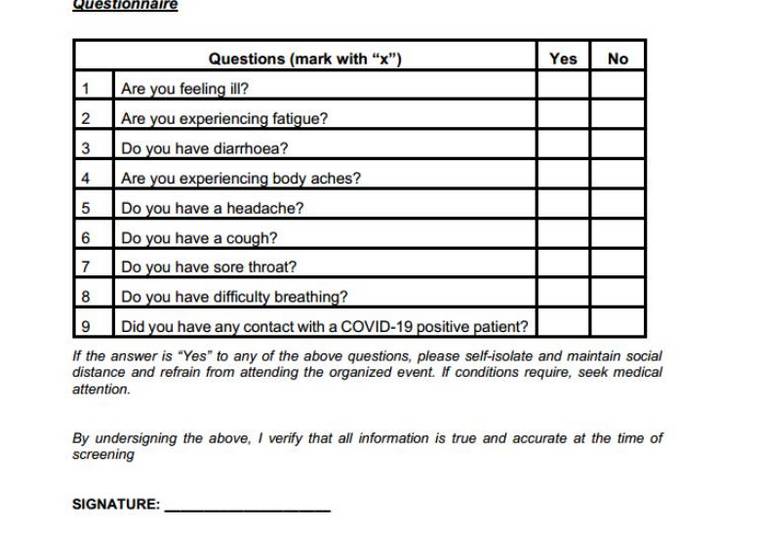

SAMAA GENERAL COMMUNICATION - 8 AUGUST 2020
The South African Model Aircraft Association (SAMAA) Management Committee (SMC) trusts that this letter finds you in good spirit, especially in this ever-changing environment.
It is very encouraging to note the progress clubs are making, flying under the CV-19 limitations. We have to date received three reports on possible close contact CV-19 incidents and as far as we know, zero reports on inter club transfers. It is safe to say that social distancing and CV-19 strategies are paying dividends. We would like to congratulate the various opened clubs maintaining the CV-19 program.
We expect that this will provide some form of comfort and that more clubs will submit their plans and join the overall strategy while doing what we love so much - Flying.
Sadly, we are aware of a few clubs that are electing to ignore the protocols. These clubs / transgressing members are being dealt with on an individual basis and some have already attracted the attention of the Aero Club and the Civil Aviation Authority. We hope that these few are not going to spoil it for the many compliant members out there.
With the above said, we have evaluated the changing environment and have decided that we can safely relax the following aspects, in line with current guidelines as promulgated in the current government gazettes.
1. Maximum number of persons allowed, at any one time, lifted to 30, subject to two compliance officers at the field overseeing activities if more than 15 people are present.
2. Visiting pilots are allowed. Note that this does not include members of the public.
3. Clubs may allow immediate family members (wife and children) to join the day subject to the limitations in point one above. Again, social distancing is critical and a must.
4. May utilize the braai facilities at the club, subject to the fact that social distancing can be maintained. To avoid confusion the sole intent is FLY-BRAAI-WAAI. This includes the use of Cadac's.
We remain focused on new developments and will review Government Gazettes as they are released for any further relaxations.
Our SAMAA news editor, Bob Skinner, is busy compiling the next edition of the electronic magazine. We would like to focus on the various clubs and what they are up to, in the sense of building projects, maidens, crashes and interesting news you feel like sharing, so we are putting the challenge out there:- submit your photos and short story to share with all fellow pilots and clubs around South Africa. You never know, yours might gain the story of the edition and thereby showcasing your club. We can all do with more members joining.
Please stay safe, maintain your CV-19 strategies and be your brother's keeper. If in doubt, please make contact with any of the current SMC members, contact details available on the website. We trust that you'll have a great week and weekend ahead.
SMC committee


CORONA VIRUS AND AVIATION EVENTS
Due to Covid 19 and regulations regulating travelling as well as restrictions controlling the number of people congregating together, no aviation events open to the general public will take place in the foreseeable future. Pilot's Post will advise our readers as soon as this changes.

PLEASE GO TO
www.youtube.com/channel/UCCuRVZAGodT6sztTeXBGeMw
and subscribe to our YouTube channel


SLING FLIGHT ACADEMY- FREE DAILY PRIVATE AND INSTRUMENT GROUND SCHOOL

Back by popular demand! Sling Pilot Academy is making both Private and Instrument Ground School available free of charge! Photo © Sling Aircraft.
More Information here: https://www.slingpilotacademy.com/free-online-ground-school/

ALPINAIRPLANES TOOK DELIVERY OF FIRST VELIS ELECTRO
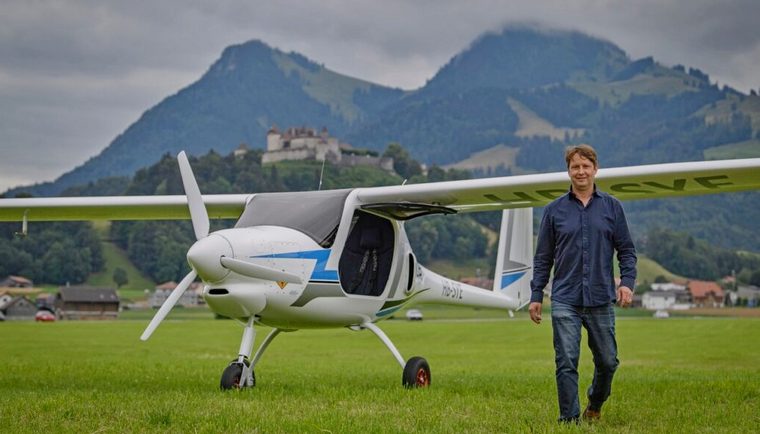
On 16 July 2020 AlpinAirPlanes of Switzerland took delivery of the first of their 14 Pipistrel Velis Electro type-certified electric aeroplanes. At the same time, the Swiss Federal Office of Civil Aviation (FOCA/BAZL) granted operations, licences and maintenance approval of electric aircraft in standard category for the first time ever. Photo © Pipistrel.
Ivo Boscarol, founder and CEO of Pipistrel: "We congratulate AlpineAirPlanes and its director Mr Marc Corpataux for their pioneering contribution to zero-emission flying and would like to thank them for their trust and commitment to the product. Pipistrel's Production Organisation has worked hard to begin serial production of the Velis Electro, as well as assure authority permits for its operation, concurrently with the type certification. I am proud that we were able to surprise and delight our customers with first deliveries less than two months after obtaining the World's first Type Certificate for an electric aeroplane."
The Swiss Federal Office for Civil Aviation (FOCA/BAZL) announced in their statement in the Federal Gazette last week that the approvals for pilot licences, operations and maintenance of standard category electric aircraft have been published. Until now, legislation had focused on fuel-powered aircraft, therefore operating electric types was considered exceptional and faced many limitations. With this, the Velis Electro became the first electric aircraft to operate commercially in Switzerland ever.
Boscarol adds: "Not only is Type-Certification of our Velis Electro the first step towards wider commercial use of electric aircraft, giving confidence that emission-free aviation is finally possible - it is also a testament of strong will and belief of our customers, such as AlpinAirPlanes. We look forward to welcoming more Velis Electro to European skies, in particular at locations where flying activity has been severely reduced because of noise. Please join us in celebrating this important milestone for AlpinAirPlanes and the Swiss aviation community."

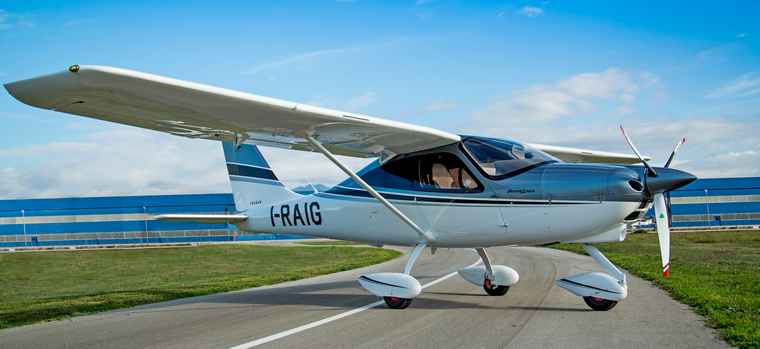
The Tecnam P2008 JC MkII is currently the most appreciated basic trainer on the aviation market. With its carbon-fibre fuselage, metal wings and stabilator, the two-seat P2008 JC has a vast number of advantages over traditional aircraft. This combination of both composite material and metal has resulted in a more fuel-efficient and much quieter aircraft.
Tecnam's two-seat P2008 JC MkII version features a number of significant enhancements. Among these are a new avionics suite with a new design of both the dashboard and glare shield, thereby enabling the introduction of the Garmin innovative G3X Touch display with a MD302 attitude instrument.
The four-seat Tecnam P2010 is a larger cousin of the P2008 and shares many of its features, such as the high-wing design, single engine and roomy cabin interiors, making it an excellent, versatile choice for this new operation. These two aircraft provide the basis for a profitable Flight Training business model, allowing state-of-the-art aircraft at low operating costs, which translates to happier students, lower rates, and greater profit for the FTO.

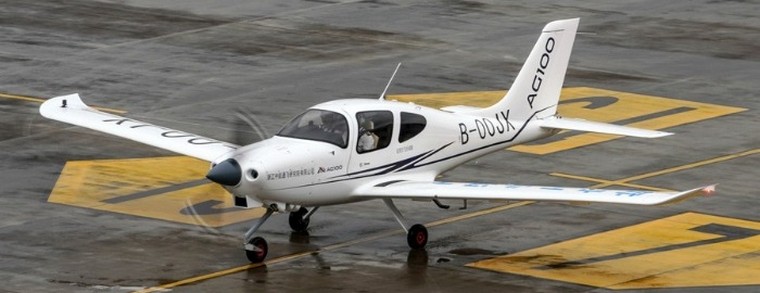
The AG100, which is a new generation trainer aircraft, conducted its maiden flight at the Moganshan airport in Deqing County, east China's Zhejiang Province.
According to the test pilots, during its 10-minute flight, the aircraft showed good manoeuvrability and stability and all systems were operating normally.
The AG100 primary trainer was developed by the Zhejiang China Aviation Industry General Aircraft Institute under the AVIC China Aviation Industry General Aircraft Co., Ltd.
The AG100 trainer model was developed to meet the strong demand of the Chinese and global markets. The aircraft's design team has already solicited opinions on the trainer model from potential buyers.
The highlights of the aircraft include cost-effectiveness, convenient operation and greater safety, according to AVIC. The aircraft has a three-seat configuration and is powered by a gas motor gasoline, making it easy to ensure fuel support and cut fuel costs.
The standard equipment of the trainer also includes a whole aircraft parachute and the enhanced cockpit airbags, which will upgrade the safety to both passengers and the aircraft. The makers of the AG100 trainer have already received the first batch of orders and inked agreements for cooperation with other entities.
The development team will enhance the project to ensure the delivery and contribute to the development of China's general aviation industry, said the AVIC.

PC-12 NGX GETS CANADIAN NOD, DELIVERIES START IN UK
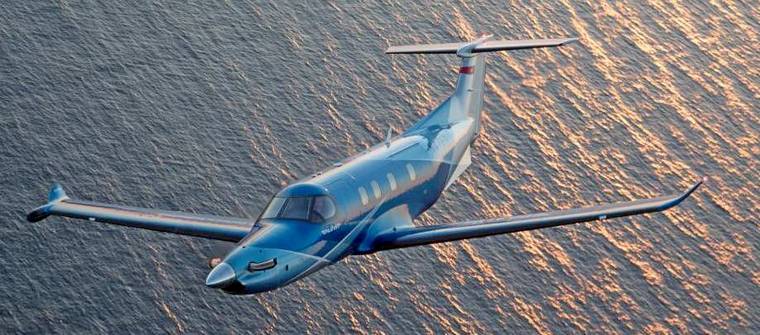
With this approval now on the books, Levaero said it will imminently begin deliveries of C-numbered turboprop singles to customers. Levaero will also begin a Canadian demonstration tour of the aircraft in September.
"The NGX is the latest iteration of Pilatus's class-leading PC-12 and will find a welcome home in Canada's diverse operational environment," said Levaero Aviation v-p of sales and business development Stan Kuliavas. "Canada is now home to more than one hundred PC-12s, and we look forward to the NGX joining those ranks in short order."
In related news, Oriens Aviation-the Pilatus sales and service centre for Pilatus Aircraft in the British Isles-yesterday delivered its first PC-12 NGX. The new airplane went to a private customer based in North West England. With PC-12 NGXs sold out for 2020, Oriens said its next NGX delivery is scheduled for mid-2021.
To date, 20 NGXs have been delivered by Pilatus, boosting the number of PC-12s flying worldwide to more than 1,750.

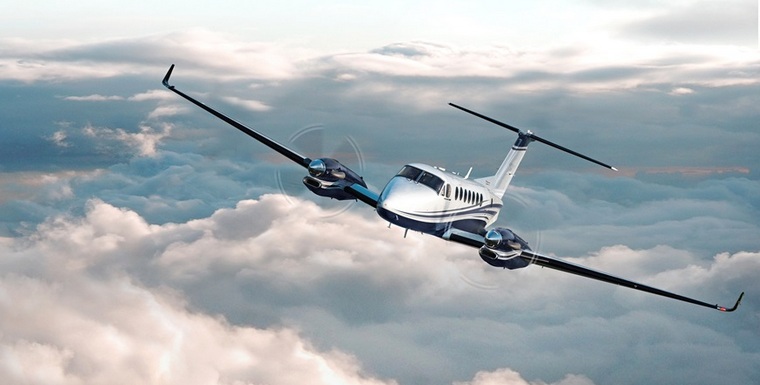
Textron Aviation today ushers in the next generation of its legendary King Air turboprop family with the Beechcraft King Air 360/360ER. The updated flagship turboprop offers the latest technological advancements in the cockpit, a redesigned cabin, and enhancements to passenger comfort. The aircraft is currently in production with customer deliveries expected to begin in the Fall of 2020. Photo © Textron.
"The Beechcraft King Air 360 builds on decades of renowned versatility and reliability in the King Air family and this upgrade further elevates it with the aircraft's superior features and engineering advancements designed to create an enhanced flying experience for passengers and crew alike," said Ron Draper, president and CEO, Textron Aviation. "The aircraft is a result of our extensive conversations with our turboprop customers worldwide as we continually increase innovation and next-generation capability to help them achieve their varied missions with greater comfort, technology and ease."
A key feature of the King Air 360 cockpit is the addition of the Innovative Solutions & Support (IS&S) ThrustSense Autothrottle. The auto-throttle supports pilots in their critical mission of delivering people or cargo safely by automatically managing engine power from the take-off roll through the climb, cruise, descent, go-around and landing phases of flight. This enhancement reduces pilot workload and supports them in their continuous vigilance to prevent over-speed or under-speed, over-temp and over-torque conditions.
Another important update in the cockpit is the new digital pressurization controller, which automatically schedules cabin pressurization during both climb and descent, reducing pilot workload and increasing overall passenger comfort. The pressurization gauges have been integrated with the powerful Collins Aerospace Pro Line Fusion flight deck.
With seating for up to nine passengers, the latest King Air offers an even greater passenger experience than its predecessor. The aircraft features a cabin altitude of 5,960 feet at a typical cruising altitude of 27,000 feet - more than 10 percent lower when compared to the King Air 350i. The improved cabin altitude levels provide greater comfort for passengers, especially during longer flights.
A redesigned bespoke cabin design features a stunning new look with custom-built cabinetry, partitions and side ledges, upgraded materials and finishes, along with all new interior schemes. Other amenities that come standard on the entire King Air line-up include pull-out work tables, standard power outlets, USB charging stations and a private aft lavatory.
"We created an environment that provides passengers with a greater sense of openness inside the King Air," said Christi Tannahill, senior vice president, Customer Experience. "The cabin experience is such a critical element when choosing an aircraft and it was important for us to surpass customer expectations. Their journey will not only be comfortable, but also a relaxing, enjoyable experience. The Beechcraft King Air 360 offers many of the amenities that our customers desire."

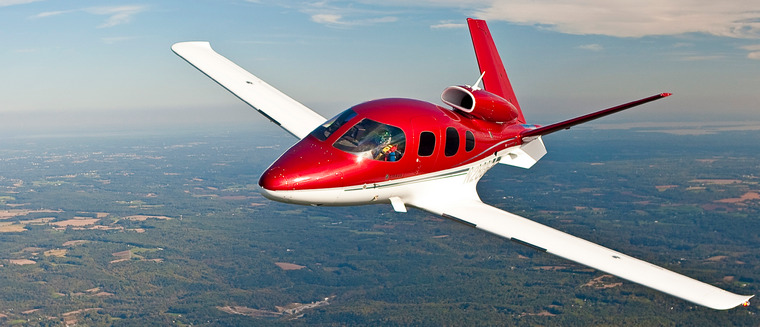
Cirrus Aircraft announced today VisionAir™, a revolutionary ownership program for the Vision Jet™. Designed as a completely turnkey program, VisionAir includes everything needed to own, operate and manage a Vision Jet, making the reality of owning the world's first Personal Jet™ more accessible than ever. Photo © Cirrus Aircraft.
The new program is a bold new step following tremendous growth of the Vision Jet, including becoming the world's best-selling jet in general aviation earlier this year and delivering the 200th Vision Jet last month.
VisionAir is an exclusive, comprehensive aircraft management program for Vision Jet owners that unlocks the unique benefits of having direct access to the Cirrus Aircraft team to manage, provide pilot services and maintain a customer's brand-new Vision Jet. The program includes an on-demand professional pilot, concierge services, complete maintenance coverage, aircraft management oversight and storage, as well as options for insurance coverage and referrals for professional tax advice. VisionAir is a total ownership solution that goes beyond fractional ownership and charter services to offer full ownership, which means extended privacy and a consistent world-class experience.
In 2016, Cirrus Aircraft ushered in a new era in personal transportation with the FAA certification of the world's first single-engine Personal Jet - the Vision Jet. The turbine aircraft defined a new category in aviation - the Personal Jet - with its spacious pilot and passenger-friendly cabin featuring panoramic windows, reclining seats, comfortable legroom for five adults and two children and as the only turbine aircraft with a whole airframe parachute system as standard equipment. Then, in 2019, Cirrus Aircraft unveiled and began delivery of the G2 Vision Jet, offering enhanced performance, comfort and safety with increased cruise altitude, speed and range, and a newly-upgraded Perspective Touch+™ by Garmin® flight deck.
Further enhancements to the Vision Jet were announced in late 2019, with the addition of Safe Return™ emergency autoland system - a revolutionary safety feature that allows passengers to land the Vision Jet in an emergency situation with the simple touch of a button. The combination of Safe Return and the Cirrus Airframe Parachute System® (CAPS®) provides the ultimate level of safety and assurance - exclusively available in the Vision Jet.
VisionAir is currently available at Cirrus Aircraft's newest factory-direct facility, Cirrus Aircraft McKinney (KTKI), located in the Dallas Metroplex area. Additional locations will be available soon. For more information visit www.cirrusaircraft.com/visionair.

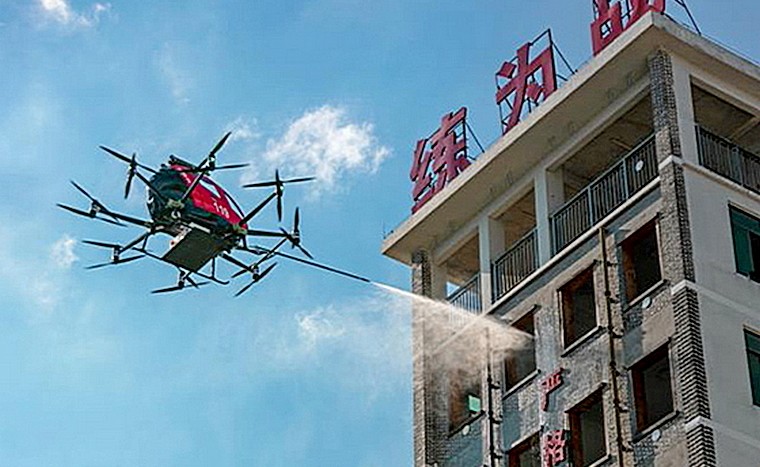
Continuing a series of major announcements over the past week, the Chinese eVTOL developer EHang has revealed a new firefighting version of its EHang 216 autonomous aerial vehicle (AAV) called the EHang 216F. Photo © EHang
Designed specifically for high-rise firefighting, the 216F can carry up to 150 litres (40 U.S. gallons) of firefighting foam and six fire extinguisher bombs in a single trip. The 216F uses a visible light zoom camera to quickly identify the location of fire, then hovers in position and uses a laser aiming device to successively deliver a window breaker, the fire extinguisher bombs and a spray of firefighting foam.
EHang envisions that its 216Fs will be deployed in urban fire stations to assist in firefighting within a five-kilometer (three-mile) radius. The company suggested that multiple 216Fs could be rapidly deployed to a single fire using the company's autopilot and remote centralized management technologies.
EHang unveiled the 216F at a launch ceremony in Yunfu, China. Weiqiang Chen, the head of a fire station in Yunfu, stated: "EHang's intelligent aerial firefighting solution can effectively solve difficult problems in fighting high-rise fires. This complements existing firefighting systems and will improve society's ability to respond to emergencies."
High-rise fires pose special challenges because they often exceed the reach of fire ladders and hoses and are located in dense urban environments where traffic can delay the response times of ground vehicles, EHang said. The company cited statistics from China Fire Magazine indicating that there were nearly 7,000 fires in high-rise buildings in China in 2019, representing a year-on-year growth of 10.6%.
EHang said the 216F demonstrates the company's ability to commercialize its technology platform to various practical applications. "The high-rise fire use case highlights the practical application of our passenger-grade AAV platform to different smart city management needs," EHang founder and CEO Huazhi Hu stated in a press release. "The potential of our intelligent AAV technology platform is boundless. We will explore and develop more aerial solutions and use cases to empower smart cities."
The launch of the 216F follows EHang's announcements that it has obtained a special flight operations certificate from Transport Canada for flight testing of the EHang 216 in Quebec and that it plans to build a new production facility in Yunfu capable of manufacturing up to 600 aircraft per year.

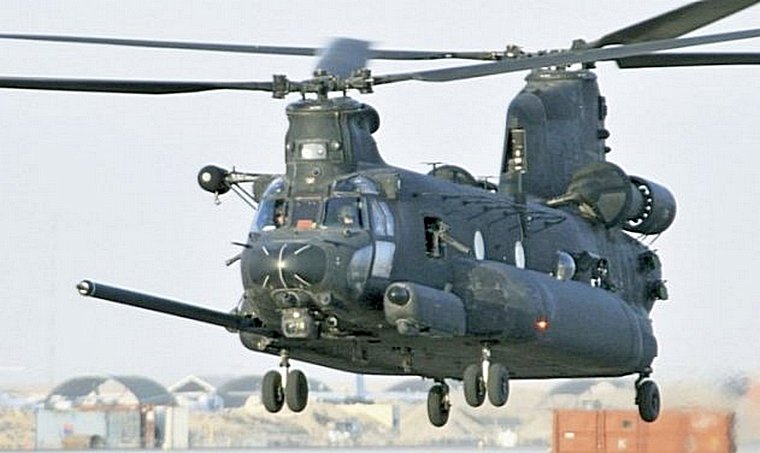
Boeing [NYSE: BA] recently signed a $265 million contract for nine more MH-47G Block II Chinook helicopters that employees in its Philadelphia plant will assemble for the U.S. Army Special Operations Aviation Command (USASOAC). Photo © Boeing.
Boeing is now on contract for 24 of the next-generation Chinooks. The MH-47G Block II Chinook features an improved structure and weight reduction initiatives like new lighter weight fuel pods that increase performance, efficiency and commonality across the fleet. The new Chinooks will give the Army significantly more capability for extremely challenging missions.
"The G-Model is a critical asset for the Army, our nation and the defence industrial base," said Andy Builta, vice president and H-47 program manager. "We're honoured that the Army's special operators trust us to deliver it."
Boeing has more than 4,600 Boeing employees in Pennsylvania supporting H-47 Chinook, V-22 Osprey, MH-139A Grey Wolf and a number of services and engineering efforts. Boeing's presence, including suppliers and vendors, supports an estimated 16,000 total jobs in Pennsylvania.

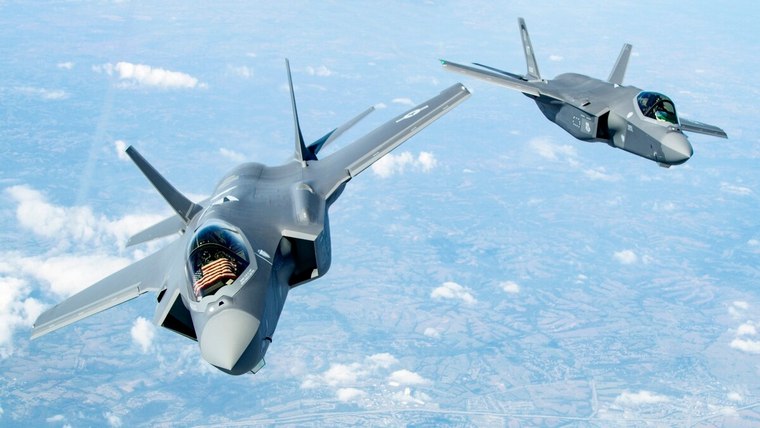
The U.S. Air Force has concluded a two-day, $1.4 million exercise that evaluated the F-35 fighter jet's ability to provide its electronic warfare capabilities to other stealthy reconnaissance and bombing platforms. Photo © Master Sgt. Ben Mota/U.S. Air Force
The event allowed the Air Force to explore the integration of tactics, techniques and procedures that have never been tested together.
U.S. adversaries over the past several years have developed advanced radars to detect incoming aircraft, pairing them with long-range missiles that in many cases outgun U.S. military weapons.
Maj. Theodore Ellis, chief of 53rd Wing Weapons, said; "Through events like these, we continue to improve our joint 4th and 5th generation tactics, which enhances our abilities in an advanced threat environment," Ellis said.

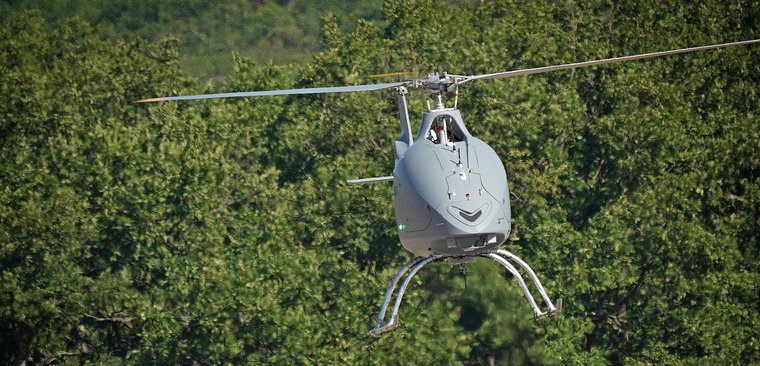
The prototype of Airbus Helicopters' VSR700 unmanned aerial system (UAS) has performed its first free flight. The VSR700 performed a ten-minute flight at a drone test centre near Aix-en-Provence in the south of France. Photo © Airbus.
This is a significant step in the programme following the first flight in November 2019 when the prototype was tethered to comply with regulatory requirements. To enable this free flight, Airbus Helicopters implemented geofencing, a virtual perimeter, which enabled and justified a flight clearance from airworthiness authorities for free flight. The flight test programme will now evolve to progressively open the flight envelope.
"The free flight achieved by the VSR700 is a major step leading up to the sea trials that will be performed at the end of 2021 as part of the de-risking studies for the French Navy's future drone," said Bruno Even, Airbus Helicopters CEO. "Thanks to the French PlanAero, the programme will make full use of two demonstrators and an optionally piloted vehicle to develop and mature the technical and operational aspects for successful UAS operations in a naval environment."
The VSR700, derived from Hélicoptères Guimbal's Cabri G2, is an unmanned aerial system in the 500-1000 kg maximum take-off weight range. It offers the best balance of payload capability, endurance and operational cost. It is capable of carrying multiple full-size naval sensors for extended periods and can operate from existing ships, alongside a helicopter with a low logistical footprint.
This VSR700 prototype has evolved over the last nine months since its maiden flight. The programme implemented the geofencing function, as well as a Flight Termination System allowing the mission to be ended if necessary. Modifications have equally been performed to the air vehicle, alongside autopilot software evolutions and updates, as well as structural modifications and reinforcements.

IBIZA, SPAIN

A KLM Royal Dutch Airlines flight from Amsterdam, The Netherlands to Ibiza, Spain was seriously disrupted when a brawl between passengers broke out. The disruptions started after one passenger refused to wear his obligatory face mask. According to KLM, two passengers misconducted themselves in a violent and brutal way. The pilot informed the local authorities and upon arrival, both passengers were arrested. The flight safety was not compromised during the flight.
Somalia, Dhobley Airstrip: A Kenya Air Force Harbin Y-12-II suffered an accident at Dhobley Airstrip in Somalia. There were no serious injuries to the 10 people on board but the aircraft was seriously damaged. The landing gear as well as the left-hand wing have collapsed.
USA, Jackson Hole, Wyo: The hot air balloons carrying 36 people in total were sightseeing near the base of the Teton Mountain Range at about 8:10 a.m. local time on Monday when they were suddenly blown from the sky. The three hot air balloons were found within a few hundred yards of each other. Eleven patients were transported by ambulance to a local hospital while one patient was taken by helicopter to a level 1 trauma centre.
Russia, Mt. Belukha, Siberia: A Robinson R66 operated by Altai-Avia suffered an accident during an attempted landing on Mt. Belukha, Siberia, Russia. The pilot and passenger were later rescued. It was not reported at what elevation of the 4500m high mountain the landing was attempted. The R66 Maximum Operating Altitude is reported to be 14000 feet (4267 m).
USA, near Soldotna, Alaska: A Piper PA-12 Super Cruiser and a float equipped de Havilland Canada DHC-2 Beaver crashed in a wooded area following a mid-air collision over Sterling, Alaska. All six occupants of the DHC-2 and the pilot, who was the sole occupant of the Piper PA-12, didn't survive the crash.
Canada: Saugeen Shores, Bruce County: While on approach to land a Stits SA-7D Sky Coupe landed in gravel pit terrain short of its intended destination of Port Elgin Airport, Saugeen Shores, Ontario. The airplane came to rest inverted, sustaining substantial damage while the two occupants onboard received minor injuries.


7 AUGUST 1980

Janice Brown pilots the MacCready Gossamer Penguin on its first solar powered flight. Photo © NASA / commons.wikimedia.org
Initial test flights were performed using a 28 cell NiCad battery pack instead of a panel. The test pilot for these flights was MacCready's 13-year-old son Marshall, who weighed 80 lb (36 kg).
The official pilot for the project was Janice Brown, a charter pilot with commercial, instrument and glider ratings who weighed slightly less than 100 lb (45 kg). She flew the Penguin approximately 40 times before a 1.95 mi (3.14 km) public demonstration at NASA's Dryden Flight Research Centre on 7 August 1980.


 |
 |
 Copyright © 2024 Pilot's Post PTY Ltd
The information, views and opinions by the authors contributing to Pilot’s Post are not necessarily those of the editor or other writers at Pilot’s Post.
Copyright © 2024 Pilot's Post PTY Ltd
The information, views and opinions by the authors contributing to Pilot’s Post are not necessarily those of the editor or other writers at Pilot’s Post.